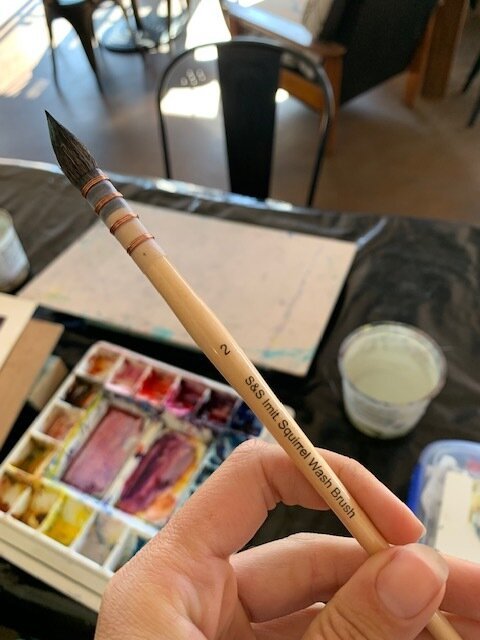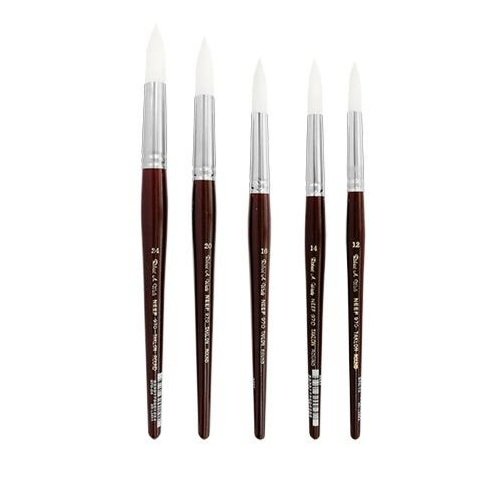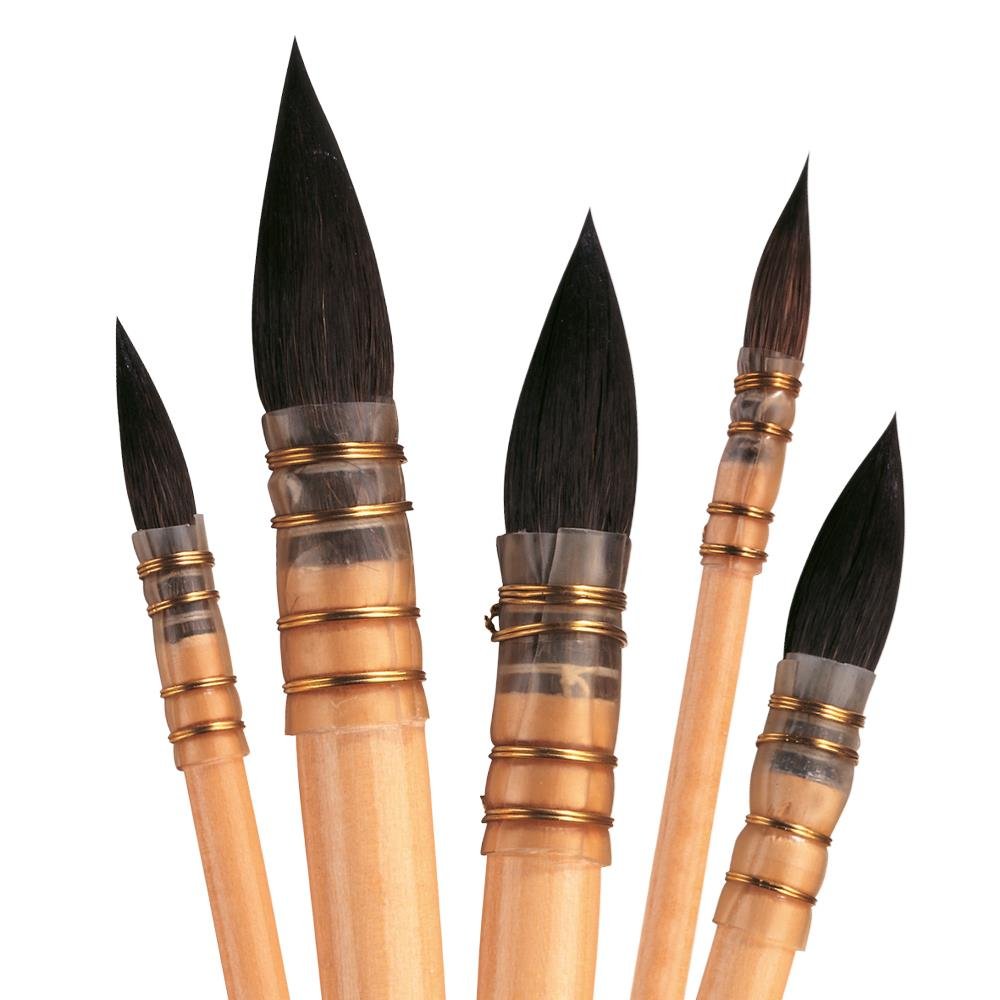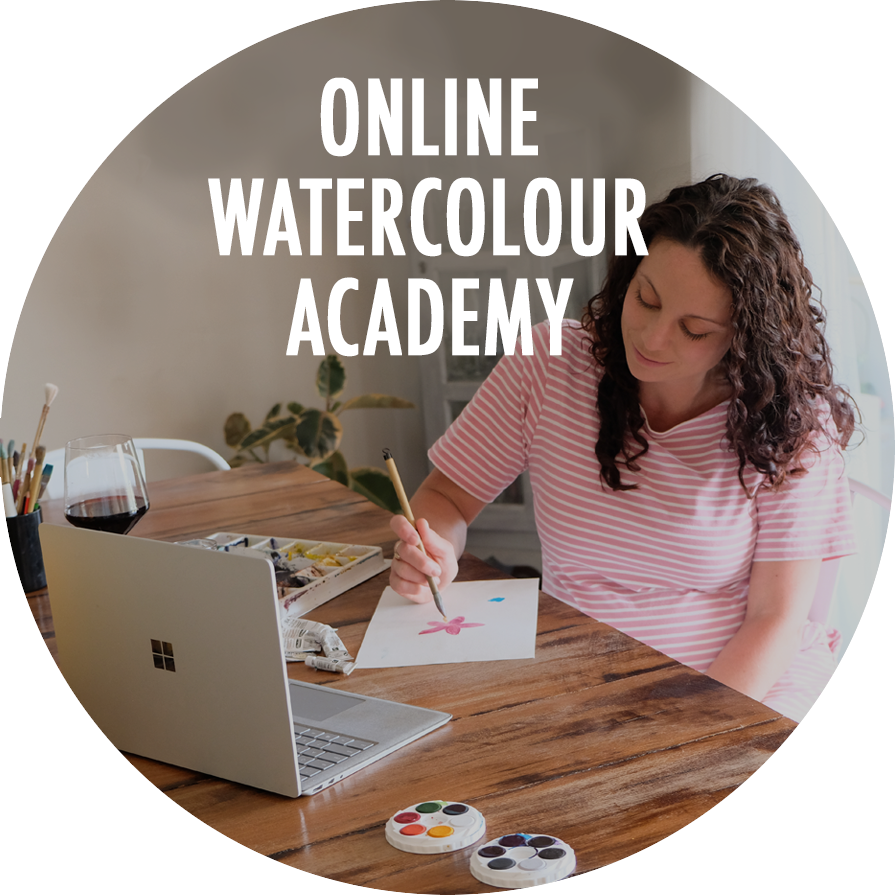best watercolour brushes Australia
I’ve been a professional watercolour artist for over 10 years now and I’ve taught watercolour classes for a lot of that time. And the biggest stumbling block I see new watercolour artists make is using the wrong brush. Your brush makes SUCH A BIG DIFFERENCE when it comes to watercolour painting, so definitely want to make sure you’re using right brush! So if you’re wondering what are the best watercolour brushes to buy, listen up, because I’m going to spill the beans on watercolour brushes.
Use natural hair watercolour brushes, NOT synthetic hair…with one exception*
First up, if you haven’t read my article on What watercolour brush you should buy, I recommend you read that first. That gives you the low-down on synthetic vs natural hair and why it makes SUCH A BIG DIFFERENCE. But since writing that comprehensive article (I even go into what brush hairs look like under a microscope) some new brushes have emerged on the scene: imitation natural hair brushes. These are synthetic but look and feel a LOT like natural squirrel hair. Most of the ones I’ve tried are rubbish. BUT…. there are a few really good ones getting around, and I can barely tell the difference between my natural squirrel hair brushes and my imitation squirrel hair brushes. And they’re half the price and vegan friendly! Here’s the one I have and recommend:
My Imitation Squirrel hair brush
There’s a few dodgy ones around but these S&S ones are great! They look and feel like my Raphail 803 squirrel hair mops but for half the price and vegan friendly. I was given this one by Yellow Brick Studio in Murwillumbah.
I’ve found that a lot of art stores recommend synthetic (taklon) hair brushes to my students and sell them as “watercolour” brushes and for some artists that’s all they use. But for how I like to use watercolour, you only ever want to use natural squirrel or sable hair watercolour brushes OR goat hair watercolour brushes (like we use in my classes) or a good quality imitation sable like the one pictured above.
Taklon hairs are too stiff, too abrasive and hold too little water for soft, loose watercolour techniques. How can you tell a taklon hair brush? The hairs are generally an even colour, either white, yellow or brown. They wont look like the fur of an animal. They’ll be quite stiff, not soft and fluffy like a make-up brush.
Taklon (synthetic) hairs are generally an even colour, either white, yellow or brown. They wont look like the fur of an animal. They’ll be quite stiff, not soft and fluffy like a make-up brush.
Buy the best watercolour brushes you can afford, then look after them:
When looking for the best watercolour brushes, look for squirrel, sable hair or even goat hair. Squirrel and sable watercolour brushes are really expensive and quite hard to come by these days. So I use goat hair in a lot of my work and in all my watercolour classes in Kingscliff. Goat hair isn’t as soft as squirrel or sable but they’re much much cheaper and still hold a lot of water. A natural squirrel or sable hair brush will always say squirrel or sable on it. They usually look like the brushes below. But a synthetic hair brush generally wont claim to be made out of squirrel or sable hair (or at least it shouldn’t).
Natural, squirrel hair watercolour brushes usually look like these.
How to care for the best watercolour brushes:
Once you get your brushes, you’ll want to look after them properly. I don’t use any soaps or cleaners on my brushes, I just make sure I always give them a good rinse out with water after using them. And NEVER leave them sitting in your water container. The water gets trapped and swells inside the ferrule of the brush, cracking the glue (and sometimes even the wood) and you’ll find your brush will be fat and loose hairs).
How to use a watercolour brush:
So you’ve made the switch from synthetic hair watercolour brushes and gone out and bought the best watercolour brushes your budget will allow. But now you may find that the soft natural hair brushes are far more floppy than you’re used to! Don’t worry, take some time. They do take a little getting used to. But don’t fear, I have a series of videos that explain how to use a watercolour brush, including:
how to keep the tip nice and pointy and stop the brush from going poofy
how to pick up paint colours with your brush
how to correctly take moisture out of your brush
how to correctly dry your brush
You’ll find all of these tips and videos in the “getting started” section in my online Artory Academy.
You’re also more than welcome to sign up to my Artory newsletter to have more helpful tips emailed directly to your inbox. And don’t forget I have free watercolour classes online that you can try as well. The Artory also offer in adult in person art classes in murwillumbah and art classes in Casuarina !
Anne x



